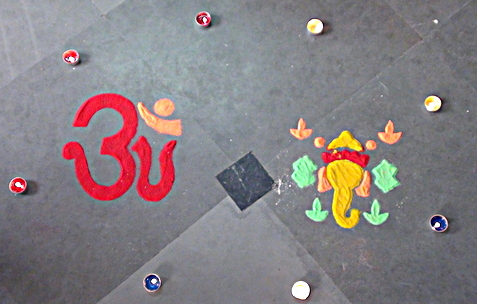Rangoli Tradition
Rangoli is a traditional art form practiced across India. Due to local variations, this art form changes its name in diverse regions of India. For instance, 'Rangoli' is popular in northern and western parts of India, in the eastern region this art form is known as 'Alpana', and in south India it is known as 'Kolam'. This art involves creating patterns with finely ground powder on the walls and floor of the house. Lotus flowers, geometric patterns, peacocks, the Swastika and goddesses are considered to be the inspiration for this creative art form which requires a lot of practice to master.
Primarily associated with the Hindu festival of Diwali, this art form is mentioned in the Chitralakshana, an ancient treatise on Indian painting and the Bhagvata Purana and the Mahabharata. Customarily drawn at the entrance and the courtyard of a house, Rangoli art in the subcontinent signifies a warm welcome for the visitors, and a charm against evil spirits.
The decorative feature of Rangoli-making is often given more attention than the ceremonial aspect of this art, gradually leading to the loss of its ritualistic essence.
Contributed By :
Anonymous
